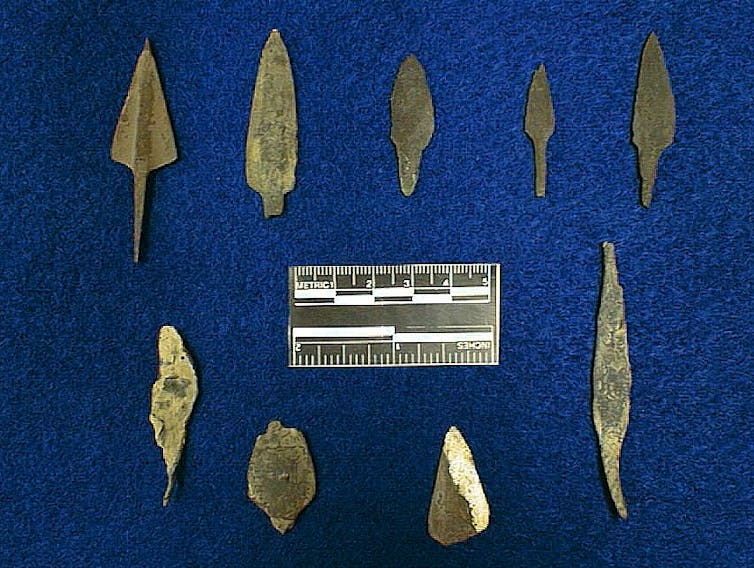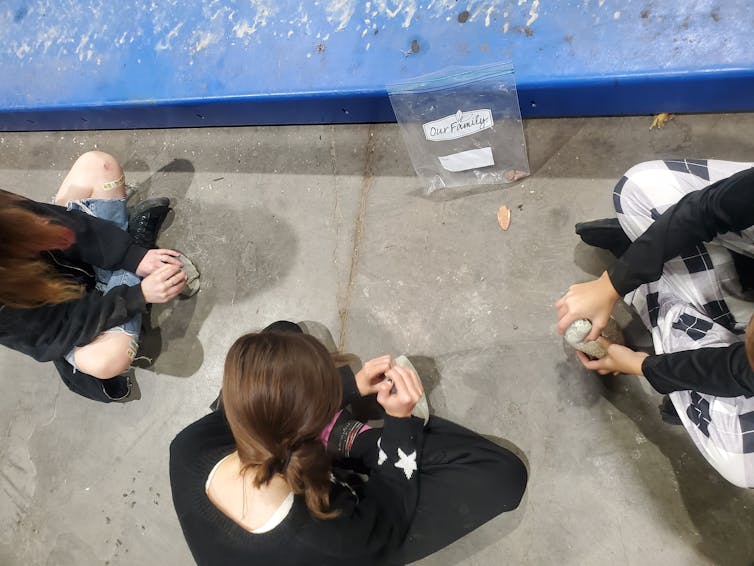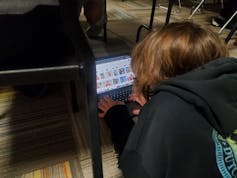The ancestors of Alaska Native people began using local copper sources to craft intricate tools roughly 1,000 years ago. Over one-third of all copper objects archaeologists have found in this region were excavated at a single spot, named the Gulkana Site.
This is the site I’ve studied for the past four years as a Ph.D. student at Purdue University. In spite of its importance, the Gulkana Site is not well known.
To my knowledge, it isn’t mentioned in any museums. Locals, including Alaska Native Ahtna people, who descend from the site’s original inhabitants, might recognize the name, but they don’t know much about what happened there. Even among archaeologists, little information is available about it – just a few reports and passing mentions in a handful of publications.

However, the Gulkana Site was first identified and excavated nearly 50 years ago. What gives?
Archaeology has a data management problem, and it is not unique to the Gulkana Site. U.S. federal regulations and disciplinary standards require archaeologists to preserve records of their excavations, but many of these records have never been analyzed. Archaeologists refer to this problem as the “legacy data backlog.”
As an example of this backlog, the Gulkana Site tells a story not only about Ahtna history and copperworking innovation, but also about the ongoing value of archaeological data to researchers and the public alike.
What happens after an excavation?
In the United States, most excavations, including those that have happened at the Gulkana Site, occur through a process called Cultural Resource Management. Since the 1960s, federal regulations in the U.S. have required archaeological excavations prior to certain development projects. Regulations also require that records of any finds be preserved for future generations.
One estimate suggests that this process has created millions of records in the legacy data backlog. Archaeological data is complex, and these records include many file formats, varying from handwritten maps to pictures and spatial data.
The problem is worst for datasets that were created before computers were in common use. Research suggests that archaeologists are biased toward digital datasets, which are easier to access and use with modern methods. Ignoring nondigital datasets means not only abandoning the product of decades of archaeological work, it also silences the human experiences those datasets are meant to preserve. Once a site is excavated, this data is the only way the people who lived there can tell their story.
Archaeologists aren’t sure how to resolve this problem. Many solutions have been proposed, including the creation of new data repositories, making new use of existing datasets whenever possible, and increasing collaboration with other disciplines and with public stakeholders. One of the more creative solutions, the Vesuvius Challenge, recently made headlines for awarding its US$700,000 grand prize to a team that successfully used artificial intelligence to read ancient text.
Digital archaeology excavates old data
Of course, such a complicated problem has no single miracle cure. In my work with the Gulkana Site, I’m employing many of these suggestions through a newer form of archaeology that some researchers are calling digital public archaeology. It combines digital archaeology, which uses computers in archaeological research, with public archaeology, which honors the public’s interest in the past.
For me, archaeology looks different than what people might expect. Instead of spending my days excavating in some fabulous location, my work involves being parked at a computer for hours on end. I dig through old information instead of digging up new information.
As a digital archaeologist, I apply modern methods like AI to bring new life to decades-old data about the Gulkana Site. I write software that converts 50-year-old handwritten excavation notes into a digital map that I can analyze with a computer.
Although it is less glamorous, this work is arguably more important than excavation. Excavation is merely a data collection technique; on its own, it can’t reveal much about a site. This is why there is still much to learn about the Gulkana Site, even though it was excavated decades ago.
Analysis is the way archaeologists learn about the past, and computers make more methods available to us than ever before. In my work, I use computational mapping techniques to study the copper artifacts recovered from the Gulkana Site. Studying where these objects were found will help us understand if they were used by all people at the Gulkana Site or reserved for a select few.
Connecting archaeology to communities today
I am also a public archaeologist; I believe that the past is made meaningful through the people connected to it. This means that my study of the Gulkana Site would be insufficient were it conducted solely by me, alone at my computer 3,000 miles away from Alaska. Instead, I have designed my research in collaboration with descendants of the people who lived at the Gulkana Site to ensure my research holds value to them, not just to archaeologists.

In my research, this means embedding opportunities for youth involvement throughout my project. Each year, I travel to Alaska to host a course about archaeology, Ahtna history, and technology in collaboration with Ahtna leadership and the local school district.
In the course, we take field trips to archaeological sites and the Ahtna Cultural Center. Kids learn about the artifacts found at the Gulkana Site and have an opportunity to make their own. Ahtna leaders share cultural knowledge with students. At the end of the course, students integrate what they’ve learned into a video game about the Gulkana Site.

The goal of my research is to bring new life to the Gulkana Site through digital methods and outreach. My experiences demonstrate that even a site excavated 50 years ago can reveal more to help us better understand the past. Perhaps more importantly, it can also help the next generation gain experience with technological skills and connect with their heritage. Old archaeological data is still meaningful in the digital age – we just have to pay attention to it.

